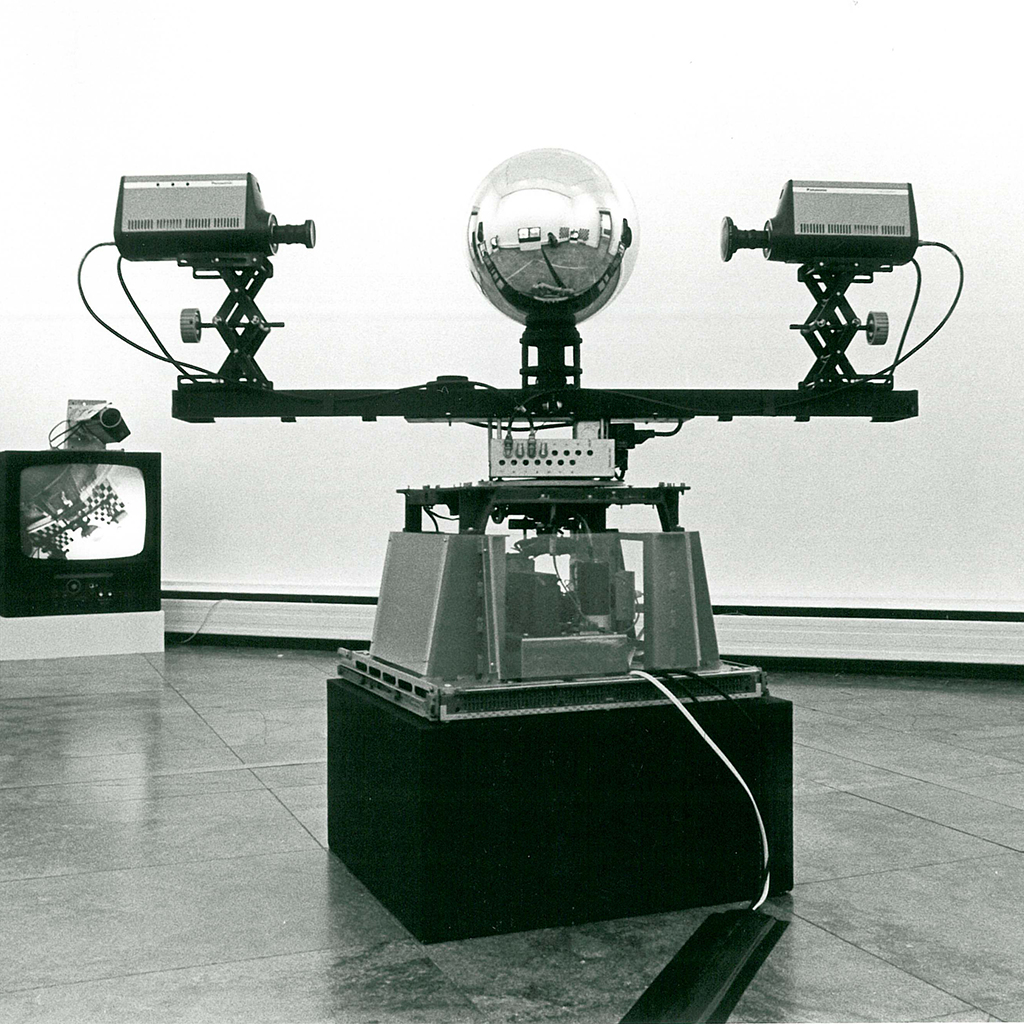
Steina‘s “Allvision” is part of the “Steina: Playback” show coming to MIT’s List Visual Arts Center. (Photo: Kevin Noble)
It’s hard to separate digital video from the hold that social media and emerging technologies have on it, and visuality’s ties to corporate surveillance. But “Steina: Playback,” an exhibit coming to MIT’s List Visual Arts Center, is perhaps an antidote. In a world where Meta’s Smart Glasses could be hijacked to dox anyone in public view and where deepfake revenge porn is proliferating, it’s refreshing to be reminded of digital media’s potential for sublimity, collaboration and raw, experimental creativity.
“Playback” is the first solo exhibition in more than a decade of work by the the Icelandic musician and video artist Steina. The exhibition is lighthearted and playful, and holds a curiosity about the moving image that’s refreshing.

Other recent video art surveys have foregrounded surveillance, citizen journalism and protest movements – all apt explorations for the medium – but Steina’s work feels unique in its preoccupation with concerns beyond the human. Video is sublime, she shows us. It’s a material with its own idiosyncrasies, something that will always have an air of mystery to it.
Steina’s husband, Woody Vasulka, was a longtime creative partner. In early collaborations, they used and created DIY signal-processing tools to manipulate audio and video, leading to some visuals that are truly bonkers.

Steina plays in her own low-resolution “Violin Power.”
In later works, Steina added movement to her pieces. With the installation “Allvision” (1976), two cameras on a turntable slowly orbit a central reflective orb. Steina had said, “When people look at ‘Allvision,’ they see themselves and, therefore, assume it is about them. But then they leave and Allvision keeps going.” This is where she started to explore what she called “machine vision,” or a machine-centered approach to image generation. It was essentially the idea that human-centric perception was not the be-all and end-all.
Steina’s musical background inspired the video “Violin Power” (1970-1978), or what she called her “demo tape on how to play video on the violin.” In the piece, she uses the instrument’s audio frequencies to disrupt the video footage, employing the violin as a creative and a destructive force – the analog chipping away at the digital.
What is most inspiring about the exhibition is its undertone of optimism. That comes through particularly in the Vasulkas’ decadeslong ethos of cooperation. The couple used technology as a tool for collaborative thinking and experimentation, and they shared the image- and signal-processing tools they created with others. Their archive of public media broadcasts, writings and artworks lives on at vasulka.org.
“Steina: Playback” is at the List Visual Arts Center, 20 Ames St., Kendall Square, Cambridge, from Saturday through Jan. 12.
Share your own 150-word appreciation for a piece of visual art or art happening with photo to [email protected] with the subject line “Behold.”
